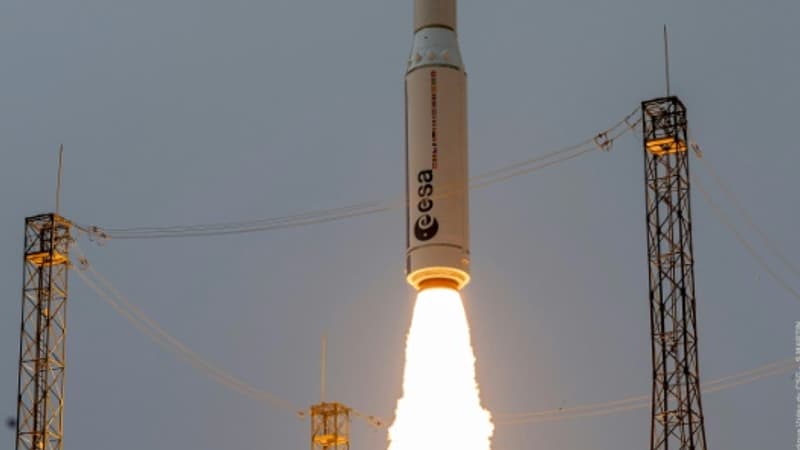The new Vega-C European Light Launcherwhich was to make its first commercial flight with two Airbus satellites on board, was lost after taking off from Kourou on Tuesday, a failure that dealt a setback for a weakened space Europe.
Ten minutes after liftoff, at 10:47 p.m. local time (01:47 a.m. French time), the launcher’s trajectory deviated from the programmed one, then the telemetry stopped reaching the control room of the Kourou Space Centerin French Guiana.
Reasons not to be determined
“The mission is lost,” Arianespace president Stéphane Israel declared from the Guiana Space Center. “About 2 minutes and 27 seconds after takeoff, an anomaly occurred in the Zefiro 40”, the second stage of the launcher, “thus ending the Vega-C mission”, the company in charge of its exploitation specified. in a short statement.
“Data analysis is being carried out to determine the reasons for this failure,” added Arianespace, which will hold a press conference on Wednesday at noon in Kourou.
Arianespace noted that there was no debris fallout after liftoff from the European launcher, under the direction of the Italian prime contractor. The Vega-C rocket was to put into orbit two Earth observation satellites built by Airbus, Pléiades Neo 5 and 6, the last two of the Pléiades Neo constellation intended to allow images of any point on the globe to be taken several times a day. with a resolution of 30 cm.
The flight had already been postponed.
Initially scheduled for November 24, this flight had been postponed for a month due to a faulty launch element. “We had to change the equipment related to the headdress,” Stéphane Israel told AFP.
It was the first commercial flight of Vega-C after its successful maiden launch on July 13, marking the introduction of the new family of European launchers.
Vega-C is presented as the little sister of the future Ariane 6, of which it uses common elements to make Europe more competitive in a booming satellite market. Vega-C – “consolidation” C according to its main industrial contractor, the Italian Avio – is an upgraded version of the Vega light launcher, fired 20 times since 2012.
The latter had suffered two breakdowns: one in November 2020 due to a manufacturing problem with the launcher, which fell back into the sea after breaking up in the atmosphere, the other in the summer of 2019 after a failure that had caused its destruction. as a precaution.
weakened Europe space
This new failure is a major setback for the European Space Agency (ESA), responsible for European launch programs, as global competition rages in the launch market, led by the American SpaceX.
The Ariane 6 rocket is the main engine of the response, but the postponement to the end of 2023 of the maiden flight originally scheduled for 2020 has penalized ESA, which has 22 Member States.
Europe in space is further weakened by the invasion of Ukraine, which ended its space cooperation with Russia and deprived the European space base of Kourou of Soyuz rocket satellite launches. Therefore, ESA was forced to turn to SpaceX to launch two science missions. The Vega-C launch was the fifth and last of 2022 for the European spaceport in Kourou.
Source: BFM TV


